Urinary and faecal N-methylhistamine concentrations do not serve as markers for mast cell activation or clinical disease activity in dogs with chronic enteropathies
(2014)
Journal Article
Anfinsen, K. P., Berghoff, N., Priestnall, S. L., Suchodolski, J. S., Steiner, J. M., & Allenspach, K. (2014). Urinary and faecal N-methylhistamine concentrations do not serve as markers for mast cell activation or clinical disease activity in dogs with chronic enteropathies. Acta Veterinaria Scandinavica, 56(90), https://doi.org/10.1186/s13028-014-0090-y
This study sought to correlate faecal and urinary N-methylhistamine (NMH) concentrations with resting versus degranulated duodenal mast cell numbers in dogs with chronic enteropathies (CE), and investigate correlations between intestinal mast cell ac... Read More about Urinary and faecal N-methylhistamine concentrations do not serve as markers for mast cell activation or clinical disease activity in dogs with chronic enteropathies.
